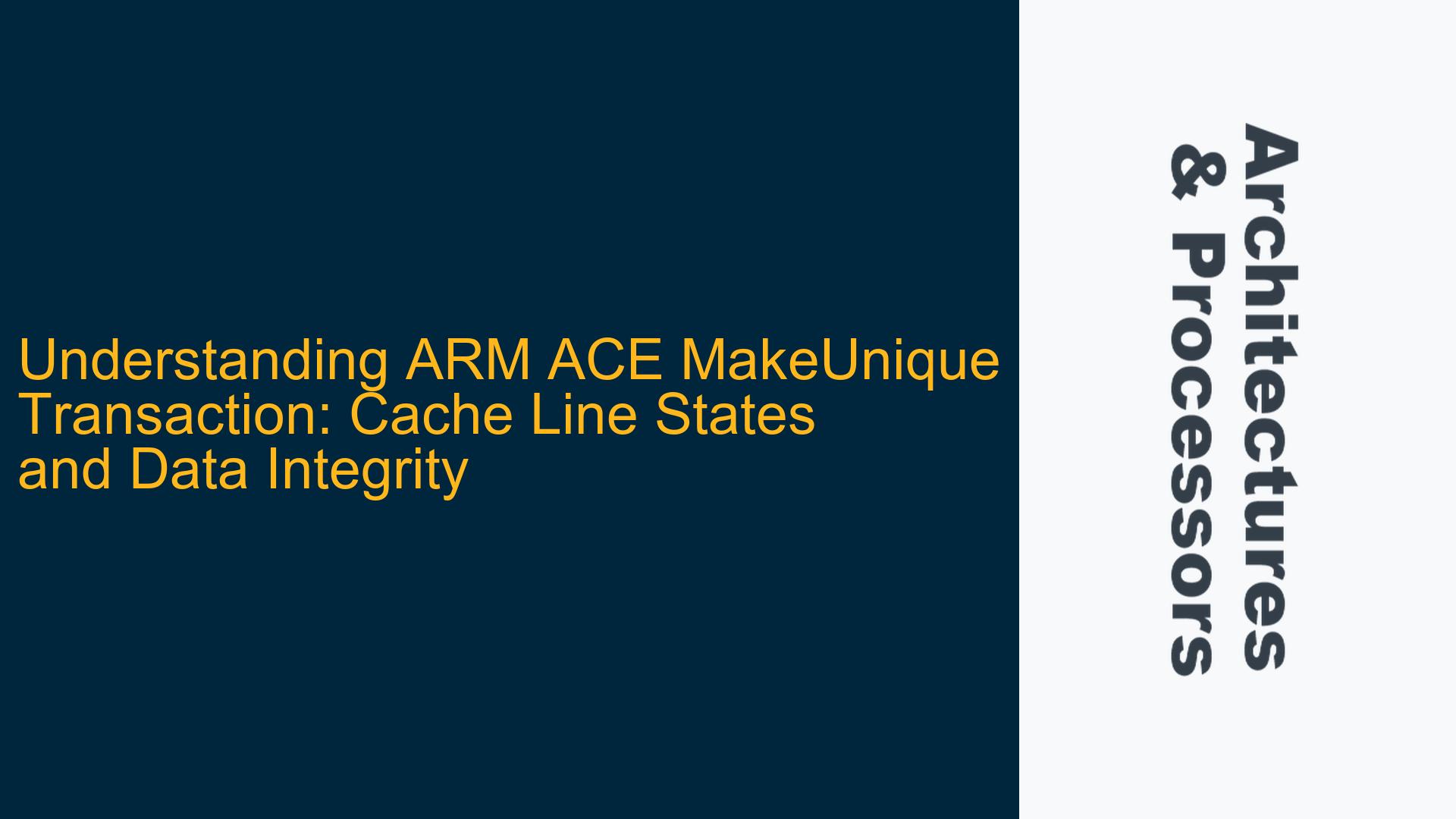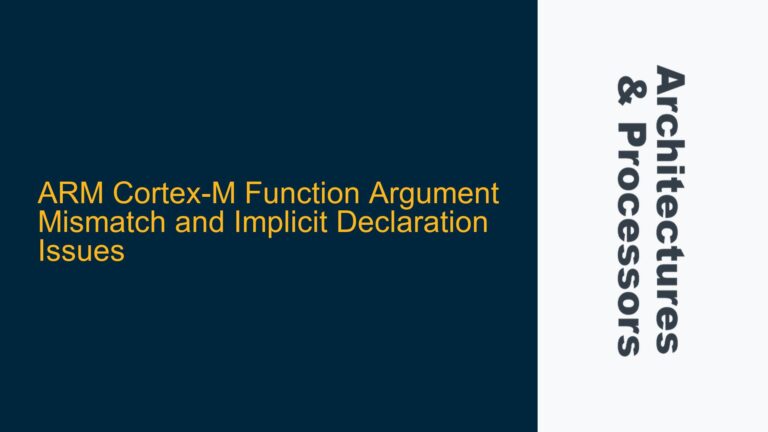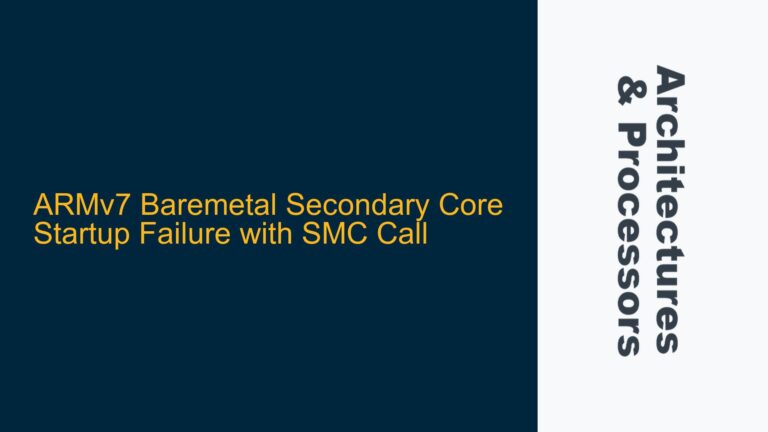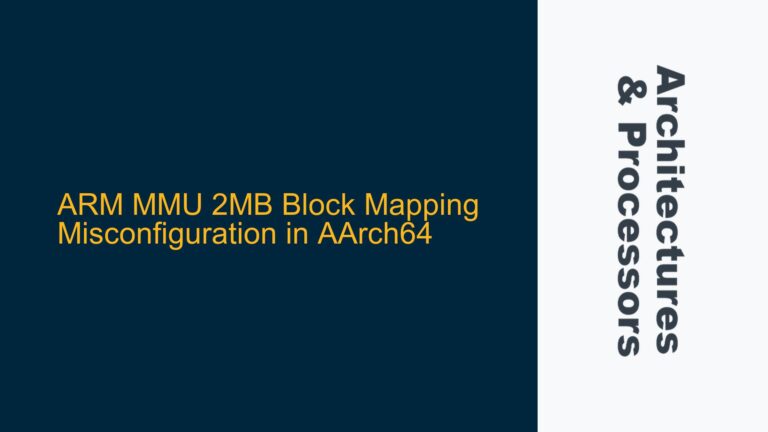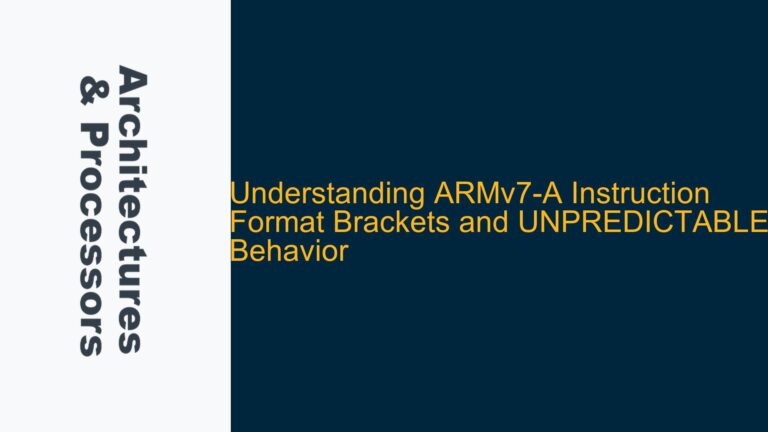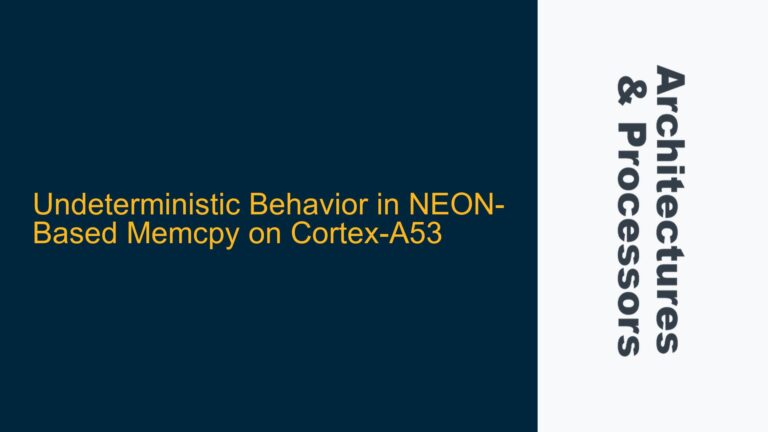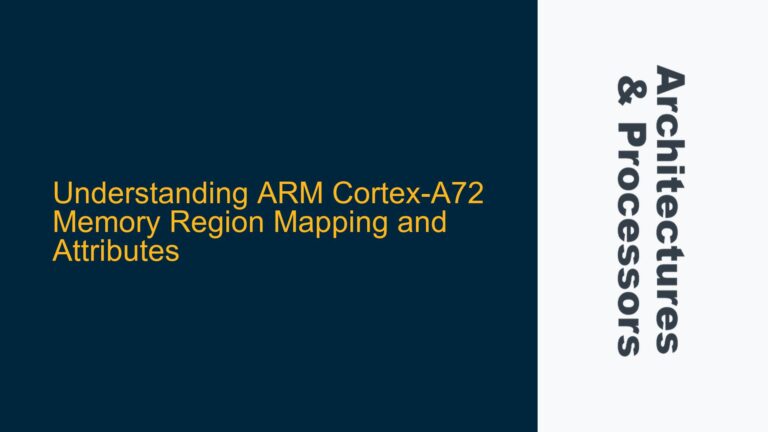ARM ACE MakeUnique Transaction: Cache Line States and Data Integrity
The ARM ACE (AXI Coherency Extensions) protocol includes a transaction type called MakeUnique, which plays a critical role in maintaining cache coherency in multi-master systems. The MakeUnique transaction ensures that a cache line is exclusively owned by a single master before performing a full cache line store. This mechanism is essential for preventing data corruption and ensuring atomicity in systems where multiple masters may access shared memory. However, the behavior of the MakeUnique transaction, particularly its start and end states, can be confusing. Specifically, the specification states that the expected start state for a MakeUnique transaction is Invalid, while the expected end state is UniqueDirty. This post delves into the intricacies of the MakeUnique transaction, explaining why these states are necessary, how the transaction progresses, and how to ensure proper implementation to avoid data integrity issues.
MakeUnique Transaction Mechanics: Start State and End State
The MakeUnique transaction is designed to ensure that a cache line is exclusively owned by a single master before performing a full cache line store. This exclusivity is critical to prevent data corruption, especially in systems where multiple masters may attempt to modify the same cache line simultaneously. The transaction begins with the cache line in an Invalid state, meaning that the master initiating the transaction does not currently have a valid copy of the cache line. This is a deliberate design choice to ensure that no stale data is present in the cache before the transaction begins.
Once the MakeUnique transaction is initiated, the cache line transitions through several states. Initially, the cache line is Invalid, as the master does not have a valid copy. The MakeUnique transaction then ensures that no other master has a copy of the cache line, effectively making the cache line exclusive to the initiating master. At this point, the cache line is in a Unique Clean state, meaning that the master has exclusive ownership but has not yet modified the data. The final state, UniqueDirty, is achieved after the master performs a full cache line store, updating the cache line with new data. This sequence ensures that the cache line is modified atomically with respect to other masters, preventing data corruption.
The transition from Invalid to UniqueDirty is not instantaneous. Instead, it involves intermediate states that ensure the integrity of the cache line. The Unique Clean state is a temporary state that indicates exclusive ownership without data modification. This state is necessary to ensure that no other master can modify the cache line before the initiating master performs the full cache line store. Once the store is complete, the cache line transitions to the UniqueDirty state, indicating that the data has been modified and is now exclusive to the initiating master.
Risks of Improper MakeUnique Implementation: Data Loss and Corruption
Improper implementation of the MakeUnique transaction can lead to significant risks, including data loss and corruption. One of the primary risks is the failure to ensure that the cache line is in the Invalid state before initiating the transaction. If the cache line is not Invalid, the master may inadvertently overwrite valid data, leading to data corruption. This is particularly problematic in systems where multiple masters may access the same cache line, as the failure to ensure exclusivity can result in conflicting modifications.
Another risk is the failure to perform a full cache line store after the MakeUnique transaction. The MakeUnique transaction only ensures that the cache line is exclusive to the initiating master; it does not guarantee that the data is valid. If the master does not perform a full cache line store, the cache line will remain in the Unique Clean state, which does not reflect the updated data. This can lead to data loss, as the updated data will not be written to memory, and other masters may subsequently overwrite the cache line.
Additionally, the timing of the MakeUnique transaction is critical. If the transaction is not performed atomically with respect to other masters, there is a risk of data corruption. For example, if another master attempts to access the cache line while the MakeUnique transaction is in progress, it may receive stale or inconsistent data. This can lead to unpredictable behavior and system instability.
To mitigate these risks, it is essential to follow the correct sequence of operations when implementing the MakeUnique transaction. This includes ensuring that the cache line is in the Invalid state before initiating the transaction, performing a full cache line store after the transaction, and ensuring that the transaction is performed atomically with respect to other masters. Failure to follow these steps can result in data loss, corruption, and system instability.
Best Practices for Implementing MakeUnique Transactions: Ensuring Data Integrity
To ensure the proper implementation of MakeUnique transactions and avoid data integrity issues, it is essential to follow a set of best practices. These practices include ensuring that the cache line is in the Invalid state before initiating the transaction, performing a full cache line store after the transaction, and using appropriate synchronization mechanisms to ensure atomicity.
First, it is critical to ensure that the cache line is in the Invalid state before initiating the MakeUnique transaction. This can be achieved by invalidating the cache line using the appropriate cache maintenance operations. For example, in ARM architectures, the Data Cache Clean and Invalidate by MVA (Modified Virtual Address) operation can be used to invalidate the cache line. This operation ensures that the cache line is not present in the cache, preventing any stale data from being used during the transaction.
Second, it is essential to perform a full cache line store after the MakeUnique transaction. This ensures that the cache line is updated with the new data and transitions to the UniqueDirty state. The full cache line store must be performed atomically with respect to other masters to prevent data corruption. This can be achieved by using appropriate synchronization mechanisms, such as memory barriers or atomic operations, to ensure that the store operation is not interrupted by other masters.
Third, it is important to use appropriate synchronization mechanisms to ensure that the MakeUnique transaction is performed atomically with respect to other masters. This can be achieved by using memory barriers or atomic operations to prevent other masters from accessing the cache line while the transaction is in progress. For example, in ARM architectures, the Data Memory Barrier (DMB) instruction can be used to ensure that all memory operations are completed before proceeding with the MakeUnique transaction. This ensures that the transaction is performed atomically and prevents data corruption.
Finally, it is important to monitor the cache line states during the transaction to ensure that the correct sequence of operations is followed. This can be achieved by using hardware performance counters or software monitoring tools to track the cache line states and detect any deviations from the expected behavior. By monitoring the cache line states, it is possible to identify and correct any issues before they lead to data corruption or system instability.
In conclusion, the MakeUnique transaction is a critical component of the ARM ACE protocol, ensuring cache coherency and data integrity in multi-master systems. By understanding the mechanics of the transaction, identifying potential risks, and following best practices for implementation, it is possible to ensure the proper functioning of the system and avoid data integrity issues. Proper implementation of the MakeUnique transaction requires careful attention to cache line states, synchronization mechanisms, and monitoring tools to ensure that the transaction is performed correctly and atomically. By following these guidelines, developers can ensure the reliability and stability of their systems, even in complex multi-master environments.
